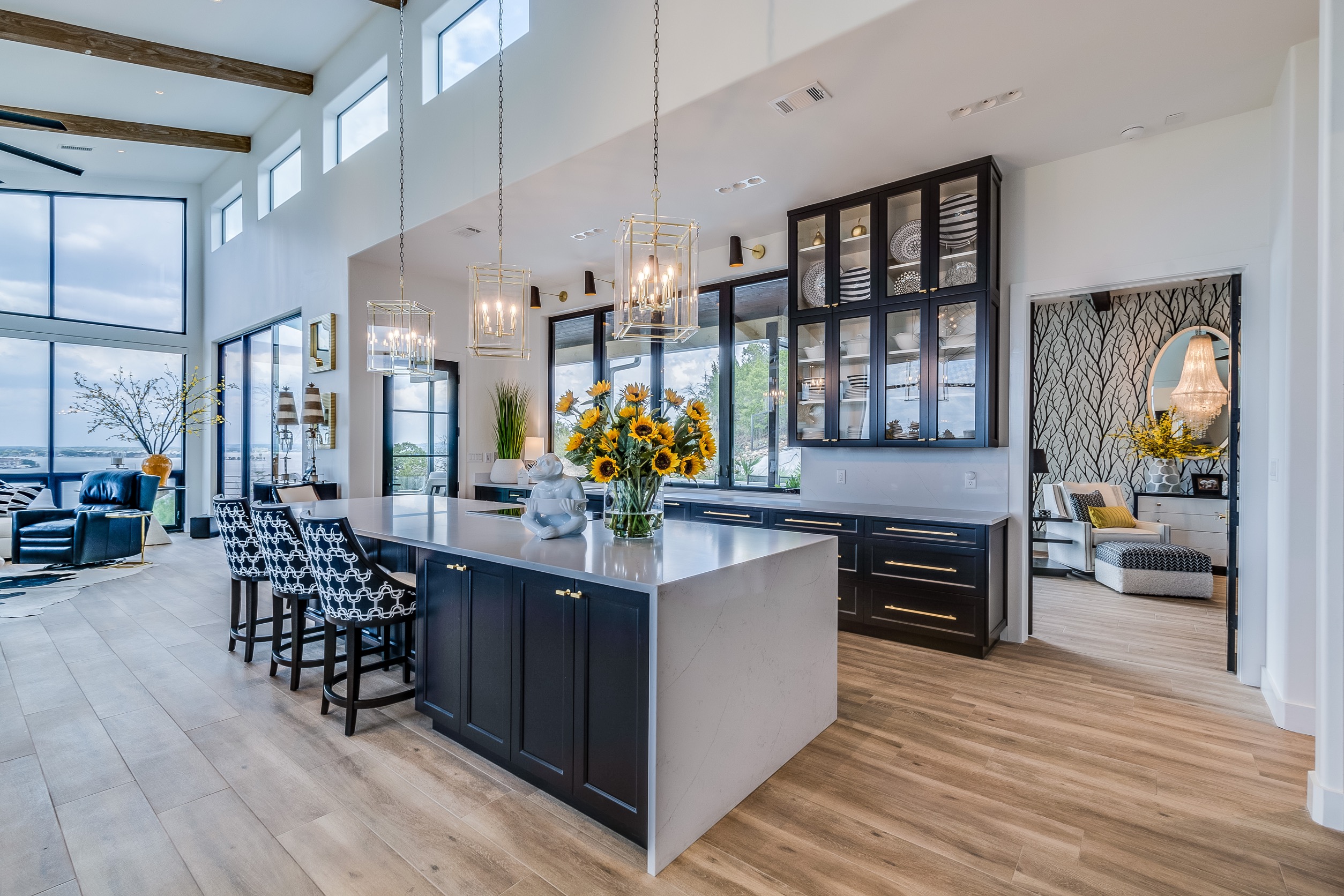Moving from one state to another, or purchasing a vacation home in a different region of the country, can be exciting. Discovering all that’s “new and different” includes regional characteristics in architecture.
People moving from the hot, often humid flatlands of Texas to the arid and snow-prone elevations of Colorado will notice the pronounced differences in home design when searching for that dream home. And if you’re building your home, you’ll discover that many of these distinctions are not just the norm, but have purpose as well.
People and Space Reflect Each Other
Someone moving from Texas to Colorado will surely notice a few distinct differences in design, style, and general appearance of the homes, which at first glance might take some getting used to. These traits convey a lifestyle, perspective, and culture particular to the setting. Here are some of the differences you can expect to see and the potential reasons behind them.
- Privacy is Overrated
While the “open floor concept” has gained popularity throughout the entirety of the United States, homes in Colorado take the notion a bit further. This is never more evident than in the design of the primary bedroom and bathroom suite.
The newer homes (those built within the last 20 years) don’t have a door between the bedroom and the bathroom. Often, these homes feature a vaulted ceiling, and the opening between the bedroom and the bathroom is like what you might find between a kitchen and dining room in an older home.
The result is a clear view from the bedroom into the bathroom where you can also see the double vanity, the bathtub or shower area, and more.
Many of the shower/tub combos are walk-ins made entirely of glass, which means anyone who steps into the bedroom has a clear view of someone in the shower. Maybe not a concern for most couple or partners, but if you’ve got teenagers running around – no thank you. You’ll want to consider rules about when it’s ok to come into mom’s bedroom until you can add a wall there.
Exhaust fans are typically found near the shower. Removing the humidity is especially important in rooms that can be closed off with a door as well as in locales with a naturally more humid climate. However, in Colorado where the relative humidity can be in the single digits for parts of the year (pass the moisturizer please), the additional moisture is usually welcomed. It is also more common to open a window for ventilation in dryer climates. When was the last time we opened a window to reduce humidity in our Texas home?
The toilet is usually around the corner, slightly hidden by a half-wall or sometimes in its own room commonly called the “water closet.” The walk-in closet is typically attached to the bathroom so that a person walks through the expansive bathroom to access the closet.
For a person living in Texas, this could be strange, but Colorado’s “open” culture and lifestyle is clearly reflected in this reduction of privacy, likely as a means to encourage air flow during the colder months. Alternatively, Texans seem to prefer more doors and trapping their air conditioning in manageable spaces.
- Let’s Keep Things Open!
Texans and Coloradoans are equally in love with their open-floor concept, which is a fairly new trend in home design emerging in the 1990’s. Typically, open-floor concepts emphasize connecting the breakfast area with the main living space or a family room. However in Colorado, you’ll also see homes where the entire main floor is open with no divider walls, wherein Texas you may have a wall to separate the kitchen from the dining area or the living room or the den, for example. Rather, a person standing in the middle of the main floor may have a sightline into each of those spaces.
There’s a tradition in home design that is regionally specific. In Texas, early settlers came from the east coast or immigrated from Germany and arrived by boat. Families brought European influenced architecture with them. The early homebuilders in Colorado and the western frontier were more driven by needing quick construction methods to get shelter in place before the snow arrived. Modest A-frame homes and log cabins are part of the tradition there.
Open floor plans in Colorado give a nod to the lifestyle that involves outdoor sports, camping, and spending time in the mountains. Access to the views of nature is valued and prioritized. In mountain areas, the house is positioned and designed to make the most of sunlight, views, air flow, and drainage. Whereas homes are in urban areas in Texas usually start with an architectural style, front facade and curb appeal.
This candidness is also reflected in how yards are designed, specifically regarding fencing. Based on the yards we see in Colorado, homeowners are much more welcoming to having wildlife and neighbors access their backyard, whereas Texans have fences — and tall ones at that.
- It‘Snow Problem
That beautiful, white, powdery stuff people in the south crave every Christmas is a fact of life in other parts of the country, and weather patterns certainly influence home design.
For example, in Colorado it’s common for a home to be elevated at all exterior points of entry. Whether it’s the front door where you welcome guests or the back door leading to a patio, several inches of snow can make opening a door difficult and messy. As a result, most homes feature steps or elevated entrances.
The snow also affects roof angle. Many of the classic French and English-styled homes in Texas feature high roofs with steep slopes, but in Colorado it’s far more common to see medium-to-low roofs with very moderate slopes.
On the one hand, this could seem backward. Why invite the snow to gather and sit on the roof for longer periods of time? The alternative is having large amounts of snow and ice gather and then fall in large chunks from an elevated position onto your vehicles, your landscaping, or worse, your unsuspecting guests.
The snow also discourages the common “outside” gathering spaces we typically see with houses built in warmer climates. It’s rare to see a covered porch or an awning in Colorado. The backs of most homes are merely a flat facade. Adding a structure to the home that can collect snow and ice invites eventual cracks and leaks, and at some point, the thaw and gravity join forces and mayhem ensues. As soon as the warmer weather arrives, you will notice plenty of outdoor living spaces with removeable sail-cloth-type canopies.
- Which Way is North?
The sun can be either worshipped or loathed depending on one’s geographical setting.
In Texas there are countless weeks when you can’t find enough shade or relief from the heat. In other places, like Colorado, you position your home to glean the benefits of sunny warmth during those times of the year when the temperature drops and the sun seems to have stopped working.
In places with points of high elevation, there’s an increased awareness of how the sun is positioned at various times of the day in relation to the rooms in one’s home, and even the positioning of the house on the lot. Passive solar heating is an advantage in colder climates and can help ease the strain on your checkbook with your gas bill arrives.
The best time of year to see why this is important is during the Spring. March is that point on the calendar when a Coloradoan could face a blizzard on Monday followed by fifty-five degrees on Wednesday. If you live in a house with a north-facing garage and driveway, you’re far more likely to still have snow in the front yard and perhaps even in your driveway for days.
Meanwhile, those houses on the other side of the street could have grass peek through, but more importantly, they’re not shoveling snow or chipping ice off their car because their house didn’t cast a shadow on that portion of the property when the sun was out.
An architect can help you bring a taste of your old home to your new home
The good news is that if you love an aspect of the interior design of your Texas home, you can absolutely modify your Colorado home to incorporate those beloved features. An architect with an appreciation for both regions can help you marry the comforts of home with the practicality of the local architecture to create your dream home. Contact us and we can help!
Laura Davis is a registered architect and interior designer in the state of Texas and Colorado, and a founding member of hpd architecture + interiors. Laura's extensive experience includes residential as well as commercial and retail projects. She also has a particular interest in restoration, holding a certificate in Historic Preservation. She is energized by the character of older homes and the stories of those who have lived there. Responding to the needs of the current owner, while also honoring the personality of the original home is a delicate process to be enjoyed.


0 Comments